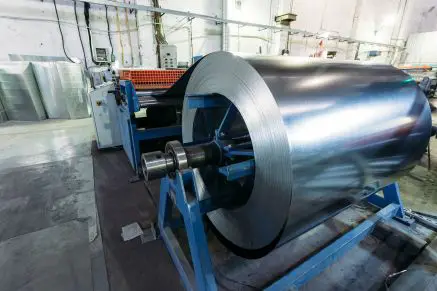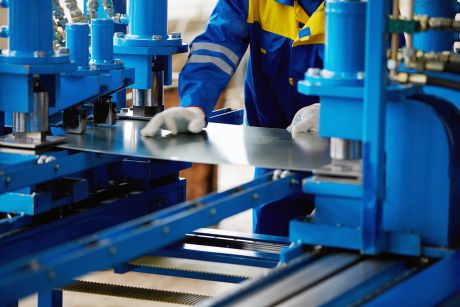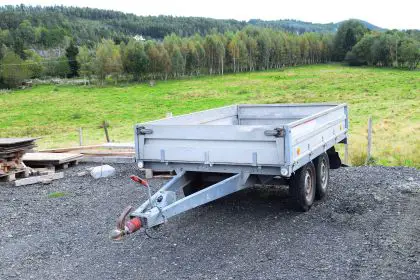
CommonCentsMom.com is advertiser-supported: we may earn compensation from the products and offers mentioned in this article. However, any expressed opinions are our own and aren't influenced by compensation. The contents of the CommonCentsMom.com website, such as text, graphics, images, and other material contained on this site (“Content”) are for informational purposes only. The Content is not intended to be a substitute for professional financial or legal advice. Always seek the advice of your Financial Advisor, CPA and Lawyer with any questions you may have regarding your situation. Never disregard professional advice or delay in seeking it because of something you have read on this website!
Metal fabrication is a profession that is engaged in creating metal objects by cutting, bending, or otherwise shaping metal. Metal fabrication also involves creating surfaces, or working with other materials such as wood, plastics and glass. Fabrication professionals are involved in designing and manufacturing the components of a product.
They may also be involved in producing those components in-house, or they may be engaged in production at a factory. Metal fabrication refers to the practice of building things out of metal rather than wood or other non-metallic materials. The term “fabrication” is used to describe the process of transforming raw materials into something useful and/or attractive (such as furniture). Fabrication refers to “the production of manufactured goods using various methods and processes for the transformation of raw materials into finished products”.
In most cases, fabrication requires that an engineer be responsible for all the steps required for manufacture. These include purchasing the raw material (e.g., iron or steel), obtaining the specifications from a client, preparing drawings and specifications from drawings prepared by an engineer, fabricating (making) these items from their raw material form and assembling these parts into complete finished items. Those jobs are already listed down below:
Plating Engineer
The Plating Engineer is responsible for the job of coating, developing, and testing metal alloys. It’s also the task of cleaning and maintaining work areas as well as preparing and maintaining chemicals. They should have a good knowledge of metallurgy, chemical processes, manufacturing methods, equipment and industrial chemistry.
Layout Designer
The Layout Designer is responsible for the layout of the fabrication and assembly area. He/She should be very familiar with equipment and tooling available in the manufacturing facility. They should also be able to work on schedules and also make sure that there is no safety hazard in the plant.
Laser Engineer
The Laser Engineer is the person responsible for operating, maintaining, and repairing the laser system. They are responsible for making sure that the lasers work at their maximum capacity. They are also responsible for measuring, programming, and testing the laser systems. They are also responsible for keeping the laser system in good working condition.
Metalworking Specialist
The Metalworking Specialist is responsible for manufacturing and repairing metal components. They should have a good knowledge of engineering, mechanical, and welding processes. They are also responsible for designing and developing metal products as well as machining the metal parts.
Heat Treat Supervisor
The Heat Treating Supervisor ensures that all materials are properly fabricated and prepared before they’re heated up to proper temperatures. The job also includes quality assurance, documentation, training and supervising other personnel involved with heat treatment processes.
Mold Maker
The Tool Maker is responsible for manufacturing metal tools. He/she should have good knowledge of lathes, machining centers, milling machines as well as heat treatment techniques. The job responsibilities include manufacturing standard size drills and milling cutters as well as other related parts like files and shears etc.

Sheet Metal Foreman
The Sheet Metal Foreman is responsible for supervising the labor and manufacturing processes. He also makes sure that there is no safety hazard in the plant. The responsibilities of a Sheet Metal Foreman include supervision of manufacturing, receiving, and storage. They are responsible for quality control of the fabrication and production of metal products as well as cost control.
Robotic Weld Technician
The Robotic Weld Technician is responsible for repairing, maintaining, and operating the robotic welding systems. They should have a good knowledge of welding processes and materials as well as robotic welding systems. They are also responsible for maintaining and testing the robotic welding systems.
Mold Maintenance Technician
The Mold Maintenance Technician is responsible for the cleaning and maintenance of the molds in a metal fabrication plant. They are also responsible for storing and storing the molds. They should have good knowledge of all types of welding, mold making, and robotic welding system.
Electron Beam Welder
The Electron Beam Welder is responsible for the welding of metals using electron beam. They should have a good knowledge of the characteristics and applications of metals, as well as welding processes. They are also responsible for welding quality and producing high quality products.
Sheet Metal Installer
The Sheet Metal Installer is responsible for the installation of sheet metal products in a metal fabrication plant. They are also responsible for repairing, maintaining, and installing all types of sheet metal products. They should have good knowledge of metals, welding, and assembling. They also should have a good knowledge of safety and health practices in a metal fabrication plant.
Sheet Metal Duct Installer
The Sheet Metal Duct Installer is responsible for the installation of sheet metal ducts and piping systems in the metal fabrication plant. They are also responsible for testing, maintaining, and repairing all types of sheet metal ducts and piping systems.
Layout Technician
The Layout Technician is responsible for designing, developing, and manufacturing the layout of a metal fabrication plant. They should have a good knowledge of CAD/CAM software, 2D and 3D design, as well as processes and methods used in the industry.
Tube Bender
The Tube Bender is responsible for bending, cutting, forming and joining metal tubes. They are also responsible for maintaining the equipment and materials used in tube processing. They should have good knowledge of tube processing processes as well as tube forming equipment.
Heat Treatment Technician
The Heat Treatment Technician is responsible for measuring, testing, and maintaining heat treating equipment as well as performing other related duties such as making repairs on heat treating equipment. They are also responsible for developing heat treating schedules to maintain quality control. They should have good knowledge of heat treating process and all types
The metal fabrication industry is not just one type of industry. Metal fabrication requires different skills and specializations in different fields such as: welding, machining, plating, mold making etc. So before applying for any job position, make sure that you have done your homework and understand what kind of career path you want to take up and which type of work you want to do.






